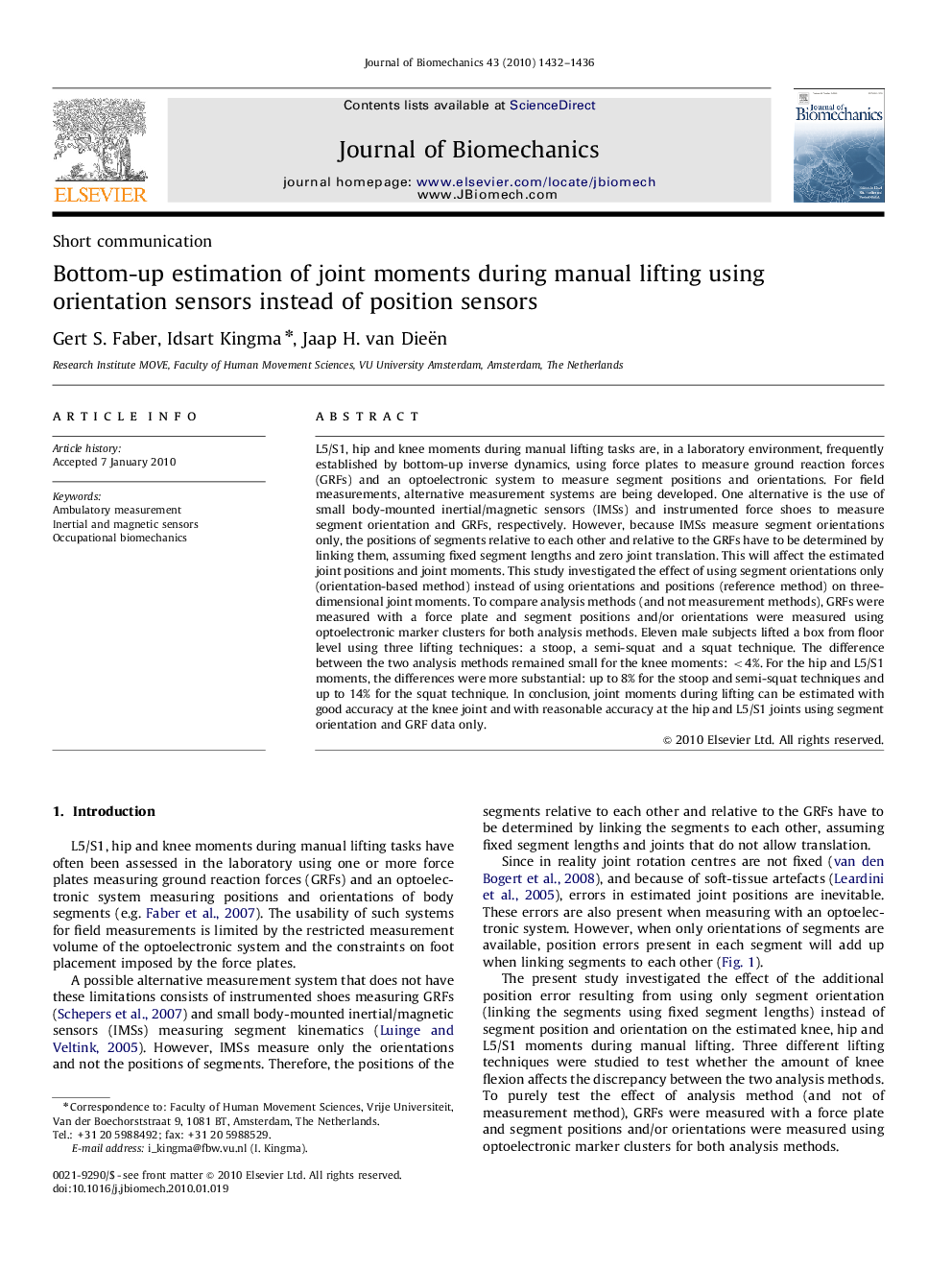| کد مقاله | کد نشریه | سال انتشار | مقاله انگلیسی | نسخه تمام متن |
|---|---|---|---|---|
| 873679 | 910314 | 2010 | 5 صفحه PDF | دانلود رایگان |

L5/S1, hip and knee moments during manual lifting tasks are, in a laboratory environment, frequently established by bottom-up inverse dynamics, using force plates to measure ground reaction forces (GRFs) and an optoelectronic system to measure segment positions and orientations. For field measurements, alternative measurement systems are being developed. One alternative is the use of small body-mounted inertial/magnetic sensors (IMSs) and instrumented force shoes to measure segment orientation and GRFs, respectively. However, because IMSs measure segment orientations only, the positions of segments relative to each other and relative to the GRFs have to be determined by linking them, assuming fixed segment lengths and zero joint translation. This will affect the estimated joint positions and joint moments. This study investigated the effect of using segment orientations only (orientation-based method) instead of using orientations and positions (reference method) on three-dimensional joint moments. To compare analysis methods (and not measurement methods), GRFs were measured with a force plate and segment positions and/or orientations were measured using optoelectronic marker clusters for both analysis methods. Eleven male subjects lifted a box from floor level using three lifting techniques: a stoop, a semi-squat and a squat technique. The difference between the two analysis methods remained small for the knee moments: <4%. For the hip and L5/S1 moments, the differences were more substantial: up to 8% for the stoop and semi-squat techniques and up to 14% for the squat technique. In conclusion, joint moments during lifting can be estimated with good accuracy at the knee joint and with reasonable accuracy at the hip and L5/S1 joints using segment orientation and GRF data only.
Journal: Journal of Biomechanics - Volume 43, Issue 7, 7 May 2010, Pages 1432–1436